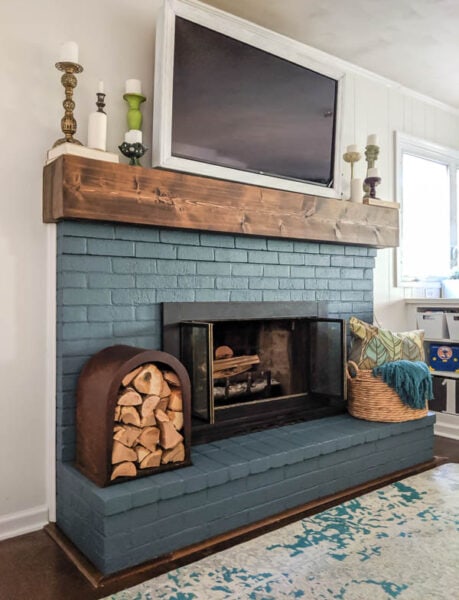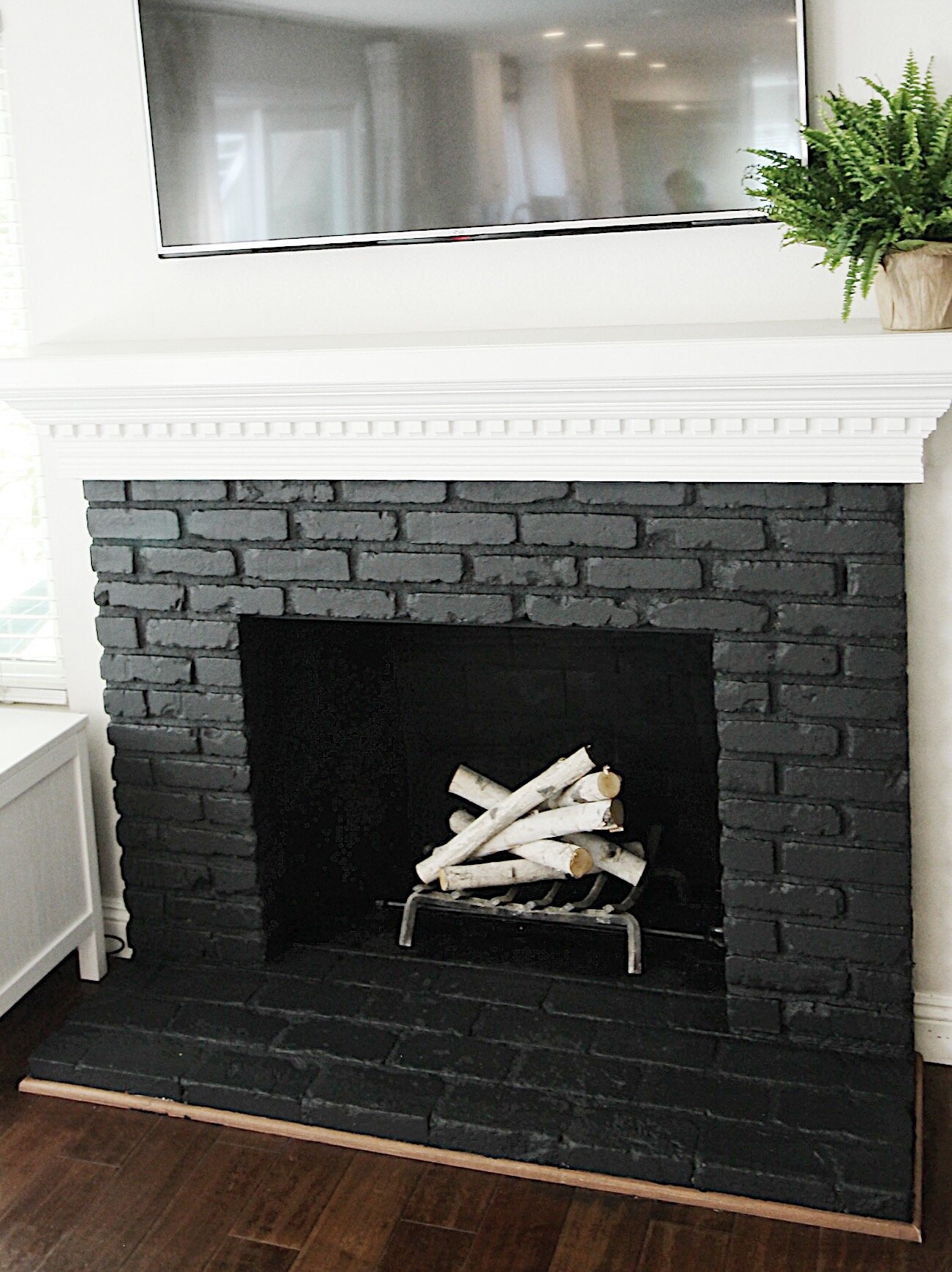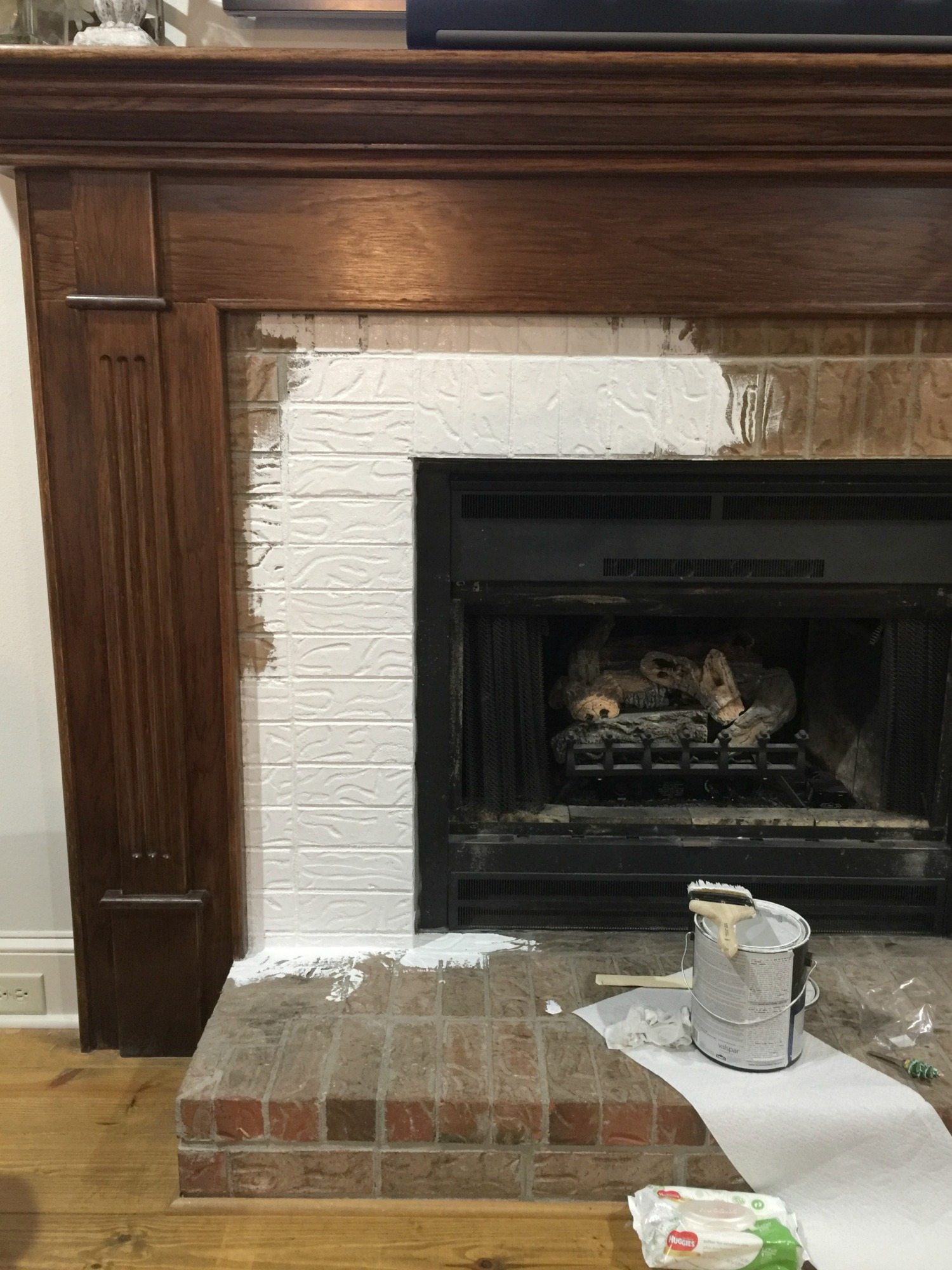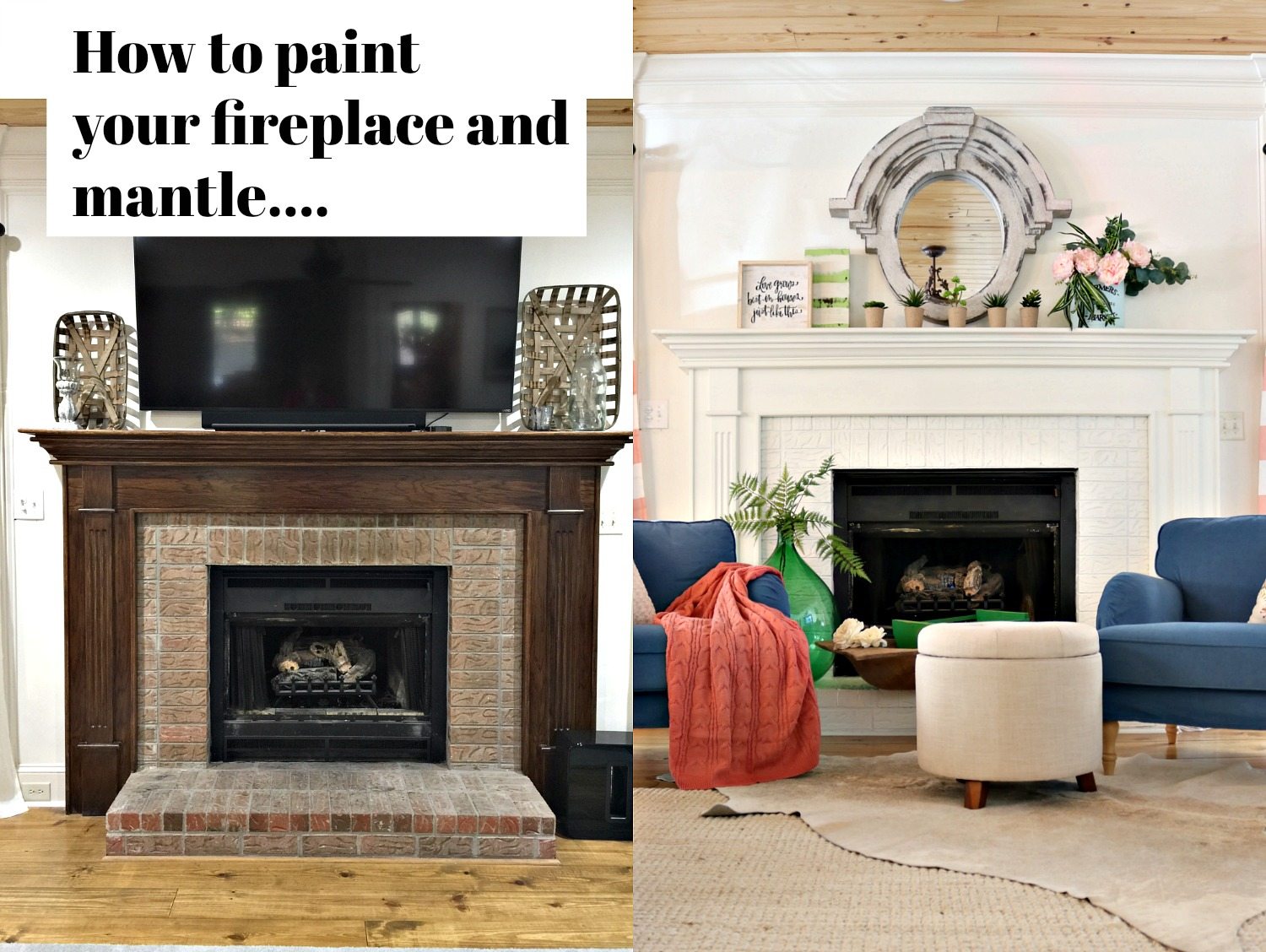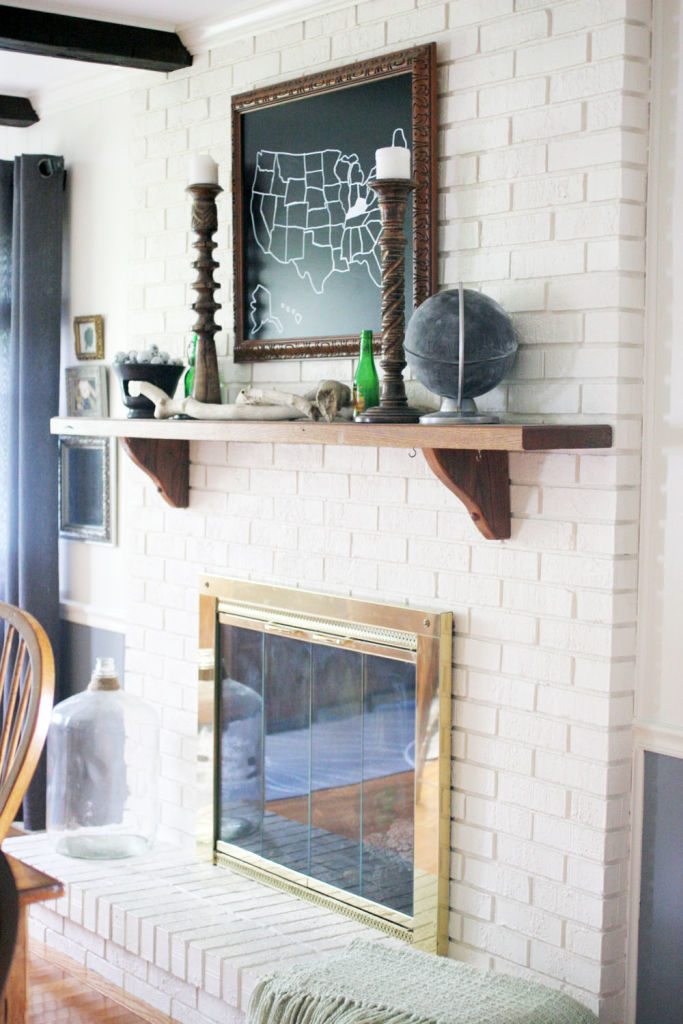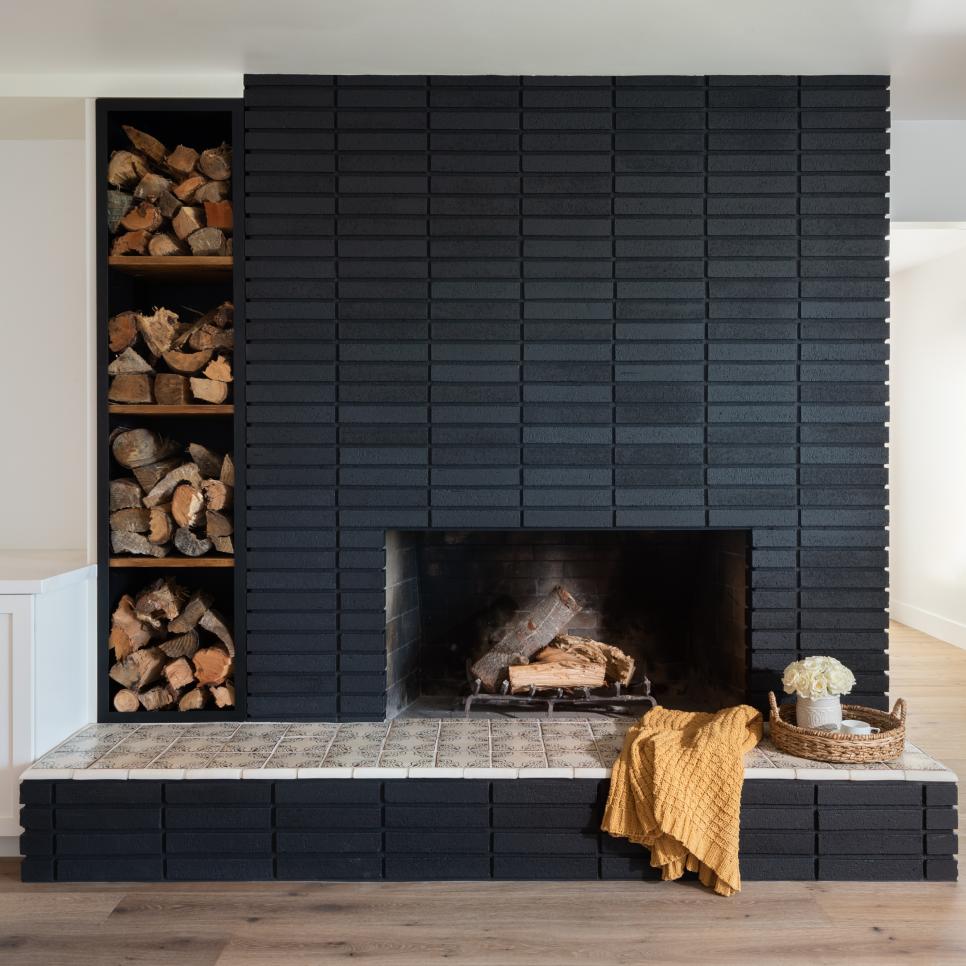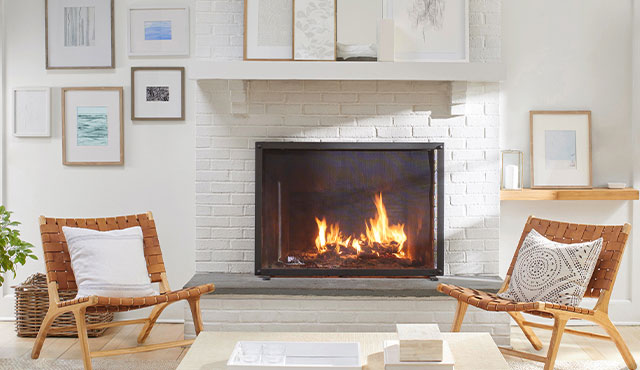Painting a brick fireplace surround is a transformative and relatively simple DIY project that can dramatically update the look of a room. Whether you’re looking to refresh outdated brick, cover up unsightly stains or discoloration, or simply change the color of your fireplace to better match your decor, painting can provide a cost-effective solution. Before beginning the painting process, it’s essential to properly prepare the brick surface to ensure optimal adhesion and a smooth finish. This typically involves cleaning the brick thoroughly to remove any dirt, dust, grease, or soot using a solution of warm water and mild detergent, followed by rinsing with clean water and allowing the surface to dry completely.
Images about How To Paint Brick Fireplace Surround
How To Paint Brick Fireplace Surround

Once the brick surface is clean and dry, it’s important to prime the surface to create a smooth and durable base for the paint. Choose a high-quality, latex-based primer specifically formulated for use on masonry surfaces, and apply it evenly to the brick using a paintbrush or roller. Be sure to work the primer into the mortar joints and any textured areas of the brick to ensure thorough coverage. Allow the primer to dry completely according to the manufacturer’s instructions before proceeding to the next step.
After the primer has dried, it’s time to apply the paint. Choose a high-quality, latex-based paint in the color of your choice, and apply it to the brick surface using a paintbrush or roller. Be sure to work the paint into the texture of the brick and cover the surface evenly, taking care to avoid drips or runs. Depending on the desired look and coverage, you may need to apply multiple coats of paint, allowing each coat to dry completely before applying the next. For a smooth and seamless finish, consider using a paint sprayer to apply the paint, which can help achieve more even coverage and reduce the appearance of brush or roller marks.
Finally, once the paint has dried completely, it’s important to seal the surface to protect the paint and enhance its durability. Choose a clear, water-based masonry sealer specifically formulated for use on painted brick surfaces, and apply it evenly to the brick using a paintbrush or roller. Be sure to work the sealer into the texture of the brick and cover the surface evenly, taking care to avoid drips or runs. Allow the sealer to dry completely according to the manufacturer’s instructions before using the fireplace. With proper preparation, painting a brick fireplace surround can be a simple and effective way to update the look of your fireplace and enhance the overall aesthetic of your living space.
How to paint a brick fireplace (the right way) – Lovely Etc.
Painted Black Brick Fireplace
Got Ugly Brick? How to Paint Fireplace Mantel
How To Paint Your Brick Fireplace
Got Ugly Brick? How to Paint Fireplace Mantel
How to Paint Your Fireplace Brick Surround
How to Paint a Brick Fireplace (and the Best Paint to Use
How to Paint a Brick Fireplace for a Modern Look Better Homes
How to Paint a Brick Fireplace Benjamin Moore
Related Posts:
- Small Brick Fireplace
- Remodel Brick Fireplace With Stone
- Red Brick Outdoor Fireplace
- How To Clean Mold Off Brick Fireplace
- Painted Gray Brick Fireplace
- Paint Wash Brick Fireplace
- Victorian Brick Fireplace
- Old Brick Fireplace Remodel
- Update Old Brick Fireplace
- Old Brick Fireplace Makeover Ideas
A fireplace can be the focal point of a room, adding warmth and ambiance to the space. If you have a brick fireplace surround that is outdated or no longer matches your decor, painting it can give your room a fresh, updated look. Painting a brick fireplace surround is a relatively easy and budget-friendly way to transform your space. In this article, we will guide you through the process of painting a brick fireplace surround, step by step.
Choosing the Right Paint
The first step in painting a brick fireplace surround is choosing the right paint for the job. It is important to select a high-quality paint that is specifically designed for brick surfaces. Look for a latex paint that is heat-resistant and durable. Semi-gloss or satin finishes are ideal for fireplace surrounds as they are easy to clean and maintain.
Can I use regular interior paint on my brick fireplace surround?
It is not recommended to use regular interior paint on a brick fireplace surround as it may not adhere properly to the surface and could peel or chip over time. Be sure to choose a paint that is specifically formulated for brick surfaces.
Cleaning and Preparing the Surface
Before you begin painting, it is important to thoroughly clean and prepare the surface of your brick fireplace surround. Start by removing any dust, dirt, or debris from the bricks using a wire brush or vacuum cleaner. You may also need to scrub the bricks with a mixture of warm water and mild detergent to remove any soot or stains. Allow the bricks to dry completely before proceeding.
Next, protect the surrounding area with painter’s tape and drop cloths to prevent any paint from splattering onto adjacent surfaces. It is also recommended to prime the bricks with a bonding primer before applying the paint. This will help ensure adhesion and durability of the paint finish.
Do I need to sand my brick fireplace surround before painting?
Sanding is not typically necessary when painting a brick fireplace surround. However, if there are any rough spots or peeling paint, you may want to lightly sand those areas before priming.
Applying the Paint
Once the surface is clean and primed, you can begin painting your brick fireplace surround. Start by cutting in around the edges with a brush, then use a roller to apply paint to the larger areas of brick. Work in small sections at a time, making sure to blend each section seamlessly into the next. It may be necessary to apply two coats of paint for full coverage.
Should I use a sprayer or brush for painting my brick fireplace surround?
While some homeowners choose to use a sprayer for larger areas of brick, using a brush and roller can provide more control and precision when painting a brick fireplace surround.
Adding Texture or Whitewashing (Optional)
If you prefer a more textured or whitewashed look for your brick fireplace surround, there are several techniques you can use to achieve this effect. One popular method is dry brushing, which involves lightly brushing on a small amount of paint using quick strokes in random directions. This technique creates a rustic, aged appearance on the bricks.
Another option is whitewashing, which involves diluting paint with water and applying it thinly over the bricks. This technique allows some of the natural texture and color of the bricks to show through, creating a soft, muted look.
Can I change the color of my brick fireplace surround using whitewashing?
Yes, whitewashing is a great way to change the color of your brick fireplace surround while still allowing some of the natural texture and color of the bricks to show through.
Whitewashing involves applying a thin layer of white paint diluted with water to the surface of the bricks. This technique creates a soft, muted look that can brighten up a room and give it a fresh, updated feel. Whitewashing also allows the texture and variations in the brick to remain visible, adding character and depth to the fireplace surround. Plus, it’s a relatively easy and affordable DIY project that can be completed in just a few hours. Overall, whitewashing is a versatile and stylish option for transforming the look of your brick fireplace while still preserving its natural beauty.
Is it necessary to use a primer before painting a brick fireplace surround?
It is not always necessary to use a primer before painting a brick fireplace surround, but it can help create a smoother surface and improve the adhesion of the paint. If the brick has a rough or porous texture, using a primer can help seal the surface and ensure better coverage and durability of the paint. Ultimately, the decision to use a primer will depend on the condition of the brick and the type of paint being used.



